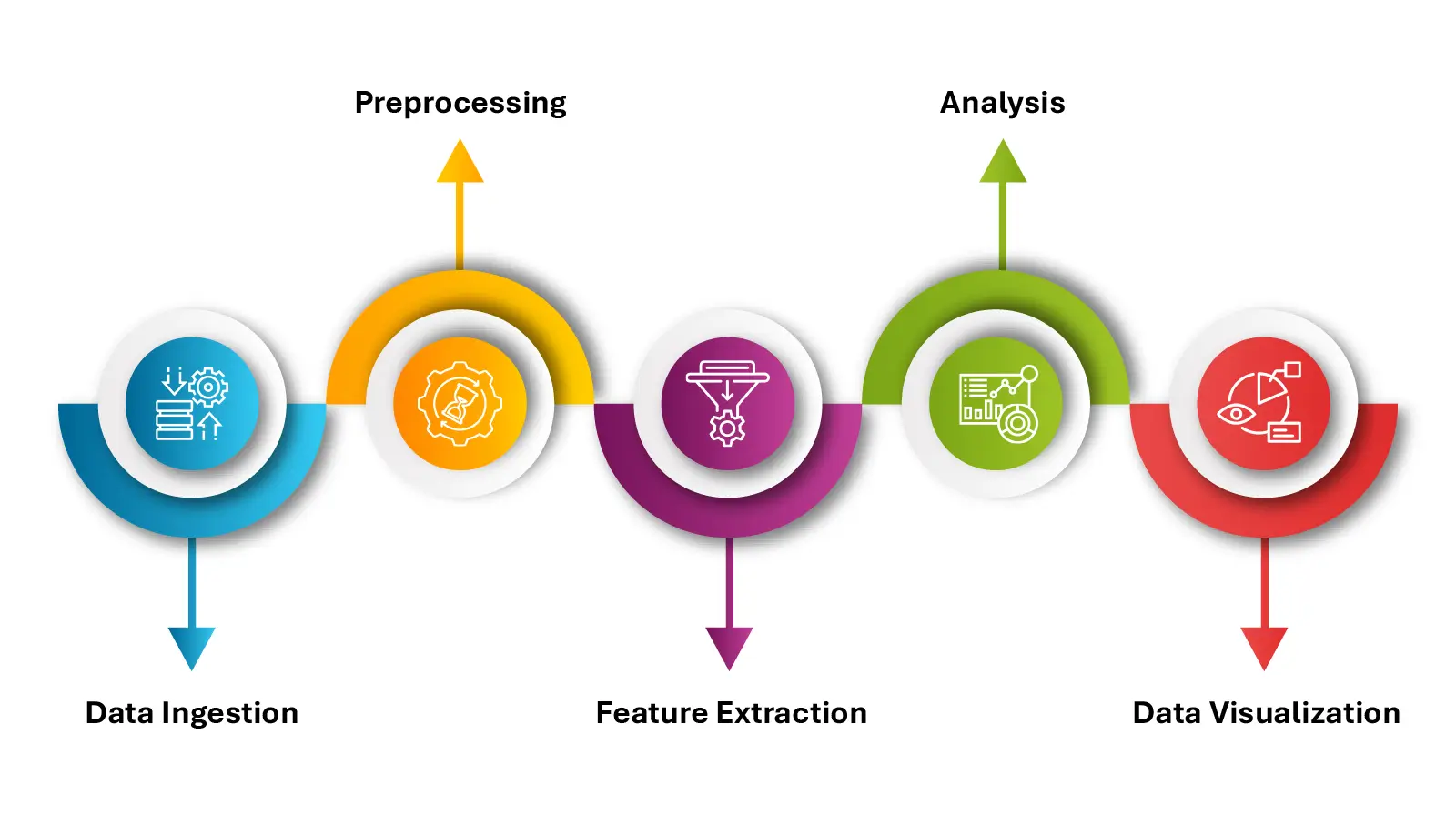In a world where data is heralded as the new oil, the real challenge lies not in acquiring it but in making sense of its vastness. While structured data—neatly organized in rows and columns—has been the traditional cornerstone of analytics, unstructured data remains an untamed frontier. From emails and social media posts to IoT sensor outputs and videos, unstructured data comprises nearly 80% of the world’s digital data. Yet, many businesses still struggle to harness its potential effectively. The pressing question is: how can organizations turn this untapped resource into a competitive advantage?
What Is Unstructured Data Analytics?
Unstructured data analytics involves extracting meaningful insights from data that lacks a predefined format or schema. Unlike structured data stored in relational databases, unstructured data defies categorization. Examples include textual content, images, audio, video files, and IoT-generated logs.
With technologies like Natural Language Processing (NLP), Machine Learning (ML), and advanced data management solutions, businesses can decode patterns, sentiments, and trends within unstructured data. These capabilities empower organizations to optimize data pipelines, enhance data governance infrastructure, and drive strategic decision-making.
The Challenges of Unstructured Data Analytics
- Volume and Variety: The massive scale and diversity of unstructured data require sophisticated storage solutions such as data lakes and data lakehouses, which can accommodate both raw and processed data formats.
- Lack of Metadata: Without proper metadata, unstructured data remains difficult to index, retrieve, or analyze, impeding big data analytics workflows.
- Data Quality: Noise, inconsistencies, and redundancies in unstructured data demand robust preprocessing techniques to ensure accuracy and reliability.
- Integration Challenges: Combining unstructured data with structured datasets for holistic analysis often requires advanced smart data workflows and automated data processes to bridge the gap seamlessly.
The Analytics Process: Turning Chaos into Clarity

Unstructured data can often feel like an insurmountable challenge, but with a well-defined analytics process, it transforms into a treasure trove of actionable insights. Here’s how the journey unfolds:
1. Data Ingestion: The process begins by gathering data from diverse sources—such as social media platforms, IoT devices, cloud data storage systems, and more—into centralized repositories like data lakes or lakehouses. This creates a unified starting point for further processing and analysis.
2. Preprocessing: Raw data is rarely ready for analysis. Preprocessing involves cleaning, deduplication, and normalization to remove inconsistencies, noise, and redundancies. This step ensures the data is structured and ready to reveal meaningful insights.
3. Feature Extraction: Key attributes are identified from the data, such as keywords in text, faces in images, objects in video frames, or recurring patterns in audio files. This step transforms raw information into analyzable elements with high contextual value.
4. Analysis: Advanced AI and machine learning algorithms are applied to perform tasks like text mining, image analysis and video recognition, and sentiment analysis. These tools uncover correlations, trends, and actionable insights, turning unstructured data into a strategic asset.
5. Data Visualization: The final step is translating insights into visually compelling and easy-to-understand formats like interactive dashboards, charts, and reports. This empowers stakeholders to make informed, data-driven decisions quickly and confidently.
By following this systematic approach, businesses can transform the chaos of unstructured data into clarity, enabling smarter decisions and driving competitive advantage.
The AI Advantage in Unstructured Data Analytics
AI lies at the heart of unstructured data analytics. Technologies such as NLP enable machines to analyze text with human-like comprehension, while image and video analytics decode visual information. AI also facilitates real-time analytics, allowing businesses to respond instantly to emerging trends.
For instance, AI-powered chatbots analyze historical conversations to personalize customer support, boosting satisfaction and retention. Similarly, predictive analytics tools sift through terabytes of unstructured IoT data to forecast equipment failures before they occur.
Why Unstructured Data Analytics Is Crucial for Today’s Businesses
In an era where data drives every decision, the ability to harness unstructured data is no longer a luxury—it’s a necessity. With the majority of enterprise data being unstructured, organizations that master unstructured data analytics are better equipped to navigate challenges, seize opportunities, and lead their industries. Here’s how unstructured data analytics aligns with current industrial needs:
1. Smarter, Data-Driven Decisions
Unstructured data holds the answers to complex business challenges, offering granular insights that go beyond traditional analytics. By tapping into customer feedback, social media conversations, or IoT sensor data, organizations gain a 360-degree view of their operations, enabling more informed and agile decision-making.
2. Elevating the Customer Experience
Understanding customer sentiment is pivotal in today’s hyper-personalized economy. Through tools like sentiment analysis and behavioral pattern recognition, unstructured data analytics helps businesses anticipate customer needs, refine products, and deliver seamless experiences, setting them apart in competitive markets.
3. Strengthening Risk and Compliance Strategies
With industries like finance and healthcare under stringent regulatory scrutiny, proactive risk management is vital. Analyzing real-time communication logs, transaction data, and operational anomalies ensures early detection of vulnerabilities, enabling businesses to stay compliant and secure while mitigating costly risks.
4. Fueling Innovation and Business Growth
Unstructured data is often the breeding ground for groundbreaking ideas. By decoding patterns in video feeds, market trends in social media posts, or emerging technologies in academic research, businesses can identify untapped markets, develop disruptive products, and reinvent their strategies to drive long-term growth.
5. Automating and Optimizing Workflows
In industries where efficiency dictates profitability, automated workflows powered by unstructured data analytics eliminate manual bottlenecks. From simplifying metadata tagging to enabling real-time decision support, these workflows accelerate analytics processes, reduce operational costs, and improve productivity.
The Industrial Edge: Why Now?
- Healthcare: Analyzing electronic health records (EHRs) and imaging data improves patient outcomes through precision medicine.
- Retail: Unstructured data reveals purchasing trends and customer feedback, allowing businesses to personalize at scale.
- Energy and Manufacturing: IoT sensor data drives predictive maintenance, minimizing downtime and enhancing operational efficiency.
- Finance: Analyzing communication logs and transaction data boosts fraud detection and compliance measures.
By turning unstructured data into actionable insights, businesses can remain agile, competitive, and resilient in an increasingly digital and data-driven world. Unstructured data analytics is no longer just about staying relevant—it’s about leading the charge into the future.
The Growing Relevance of Unstructured Data Analytics
- By 2025, 80% of global data will be unstructured (IDC).
- Each year, organizations lose an average of $12.9 million due to poor data quality (Gartner).
- NLP-powered sentiment analysis in retail is projected to drive $40 billion in global revenue by 2027 (Markets and Markets).
- In 2022, the data analytics market was valued at USD 41.05 billion. It is expected to grow significantly, projected to soar to USD 279.31 billion by 2030, with a robust CAGR of 27.3% over the forecast period from 2023 to 2030 (Fortune Business Insights).
Elevate Your Strategy with Unstructured Data Analytics
Read the latest blog: The Drowning in Data, Thirsting for Insights Paradox in the Age of AI – What’s the Solution?
Learn about our Unstructured Data Management Software – Zubin
Schedule a demo with our team






